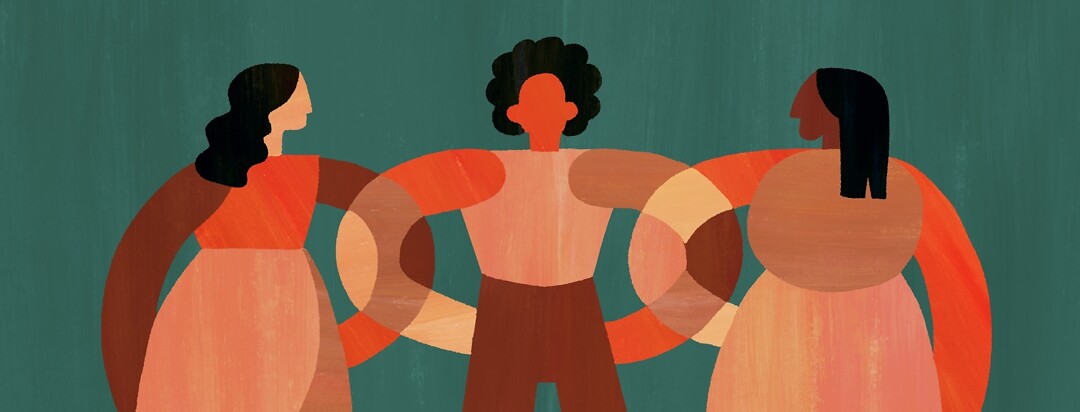How Endometriosis Affects People Of Color: Stories from Our Community
In our 2021 Endometriosis In America survey, we looked at how endometriosis affects people of color (POC). More than 1,000 people with endo completed the survey. Of those, 18 percent identified as Black/African American, Asian/Pacific Islander, Native American, Hispanic or Latino, or “Other”.
Everyone with endo has a unique experience. However, we learned that people of color have some different experiences navigating life with this disease.
Endometriosis negatively impacts self-image and mood
Physical endometriosis symptoms can include severe pain, bloating, and fatigue. Those symptoms can harm mental and emotional health too. More than half of our POC respondents say endo has negatively impacted their self-image.
The constant battle of chronic symptoms can be crushing. This can make a person feel like they do not have control. People of color living with endometriosis were more likely to feel powerless against the condition. In fact, 68 percent of POC respondents feel powerless against endometriosis.
Anxiety about the future
Endometriosis can produce many unknowns and anxiety about the future. Many in the community expressed concerns about trying to have children. Community members also feared recurring symptoms.
- People of color were more likely to have had infertility in the last 6 months.
- 31 percent of POC respondents experienced infertility in the last 6 months.
- 85 percent POC respondents worry about their symptoms coming back over time.
Severe endometriosis is more common
About half of the people of color who were surveyed said endometriosis symptoms impact them daily. These endo warriors were more likely to describe their condition as severe.
- 48 percent have daily endometriosis symptoms.
- 57 percent described their endometriosis as severe.
Pain is common
Pain is one of the most common and difficult endometriosis symptoms to deal with. Every single survey respondent said they have experienced endo-related pain at some point.
There are several types of endometriosis-related pain, including pain with ovulation. Because of their severe pain, respondents of color were more likely to believe they have to overuse painkillers for relief.
- 83 percent have experienced ovulation pain.
- 83 percent have experienced pain during urination or with bowel movements.
Living with pain can disrupt sleep. Endo warriors of color were more likely to have difficulty sleeping because of pain. Some call this “painsomnia”. While fatigue is a common symptom, poor sleep can lead to tiredness and lack of energy.
- 94 percent have experienced feeling tired or a lack of energy.
Living with other chronic conditions
Research shows that people living with endometriosis also have high rates of comorbidities and chronic conditions. These can range from autoimmune disease and anxiety, to allergies and irritable bowel syndrome. People of color with endometriosis seem to experience some chronic conditions more than their white counterparts.1
- Respondents of color were more likely to also be diagnosed with chronic pain.
- Respondents of color were more likely to have anemia.
Chronic illnesses like endometriosis may increase the chances of developing a mental health condition.2 Anxiety is common among endo warriors, with 70 percent of all respondents reporting it.
- 67 percent of POC respondents have been diagnosed with anxiety.
- 46 percent of POC respondents have been diagnosed with depression.
POC have different health care experiences
When deciding on a treatment, 75 percent of community members involve their doctor. Experiences vary with different types of healthcare providers too. Of the total respondents:
- 11 percent said their family doctor rushes them through a visit.
- 15 percent said their surgeon rushes them through a visit.
- POC respondents were more likely to feel that their doctor rushed through their visits.
Treatment option choices
Endometriosis treatment options include hormone therapy, prescription medication, surgery, and lifestyle changes.3 More than half of POC respondents would rather make changes to lifestyle and diet than take a prescription drug.
The 2021 Endometriosis In America survey was held February 2021 through March 2021. The survey was completed by 1,027 people.

Join the conversation